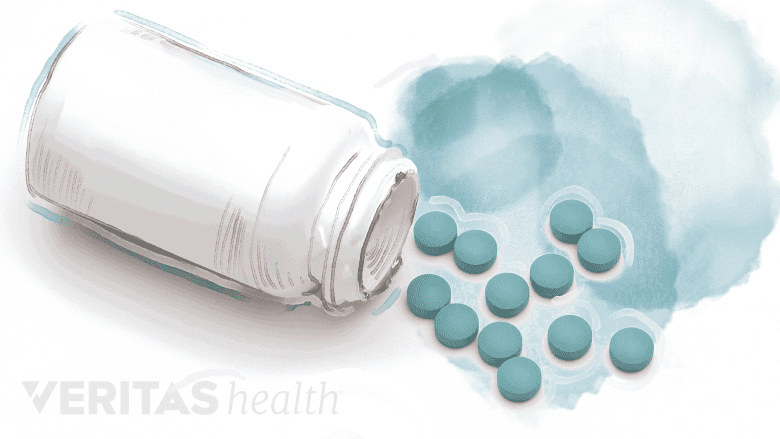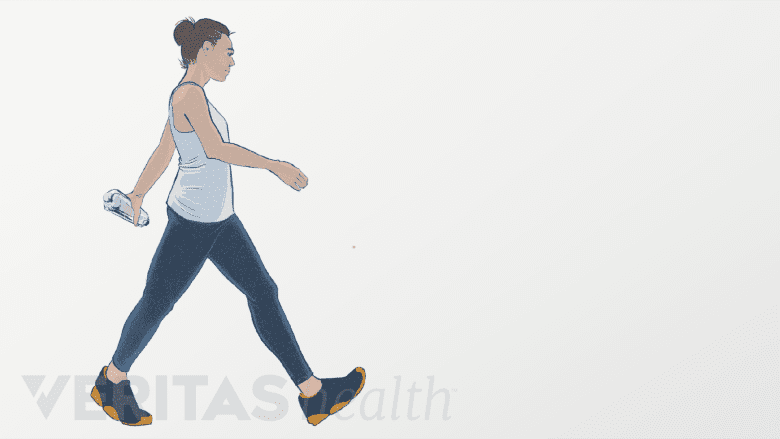In the vast majority of cases, a stiff neck is caused by a simple muscle strain or sprain that will heal on its own within a few days. However, several treatment options are available to reduce pain and help facilitate healing by following one or more of the tips below.
In This Article:
- Stiff Neck Causes, Symptoms, and Treatment
- Treatment for a Stiff Neck
- When Is a Stiff Neck Serious?
- Stiff Neck Symptoms and Causes Animation
Self-Care for a Stiff Neck
An individual can do several things on his or her own to begin treating a stiff neck. Some common self-care strategies include:
Cold and/or heat therapy

Cold (and/or hot) therapy methods can help with neck stiffness and pain.
Cold therapy/ice packs help relieve most types of neck stiffness by reducing local inflammation. Applying ice during the first 24 to 48 hours of a painful flare-up usually has the most benefit in terms of reducing inflammation. Applying heat to the neck can spur blood flow, which fosters a better healing environment. Some patients prefer ice, whereas others prefer heat. Both may be used alternately.
Watch How to Apply Heat Therapy for Neck Pain Relief Video
Over-the-counter medications

Prescription and over-the-counter (OTC) medication may help reduce neck pain.
Nonsteroidal anti-inflammatory drugs (NSAIDs), which work by reducing inflammation, are typically a first line of treatment for neck stiffness and soreness. Common types of NSAIDs are ibuprofen (e.g. Advil, Motrin) and naproxen (e.g. Naprosyn). Even nonprescription medications have risks, possible side effects, and drug (or food or supplement) interactions, so be sure to discuss any medications with a pharmacist or doctor.
Rest
Taking it easy for one or two days gives injured tissues a chance to begin to heal, which in turn will help relieve stiffness and possible muscle spasm. For example, someone who swims may want to avoid certain swim strokes that involve lots of head twisting for a few days. However, it is recommended to limit rest to one or two days, as too much inactivity can lead to a weakening of the muscles, and weak muscles have to struggle to adequately support the neck and head.
Gentle stretching

Stretching exercises help restore strength and function in the neck.
Stretching, as soon as tolerated, helps ease the stiffness and restore the neck to a more natural range of motion. For many, it is a good idea to learn appropriate stretches with the help of a physical therapist or other qualified health professional.
See 4 Easy Stretches for a Stiff Neck
Low-impact aerobic exercise

Light aerobic exercise, such as walking, helps promote healing.
In addition to stretching, any form of low-impact aerobic exercise, such as walking, is often helpful in relieving any type of stiffness. Even if walking does not directly involve the neck, it helps circulate oxygen to the soft tissues throughout the spine, which in turn promotes healing.
Depending on the person and severity of the strain or sprain, different combinations of these treatments could work better for some than others. Trial and error will likely be necessary to find the treatment plan that works best for an individual.
How to Lower Risk for a Stiff Neck
Practice good posture

Setting up a workstation to be ergonomic is an important part of ensuring good posture in day-to-day life.
Getting into the habit of always using good posture can go a long way toward preventing aches and pains. Some examples could include setting up a workstation to be ergonomically-friendly, lifting heavy items with the legs rather than the back, or sleeping on the back or side with an ergonomic pillow. Being aware of posture throughout the day can keep the spine naturally aligned and minimize stress on the neck.
See How Poor Posture Causes Neck Pain
Keep neck strong and flexible
When the neck muscles are strong and flexible, they are better able to hold good posture and less likely to spasm and become painful. A physical therapist or other medical professional can help design a physical therapy program with neck exercises and stretches for an individual to follow. After learning what works for him or her, an individual can usually maintain neck strength and flexibility by continuing with exercises and stretches at home.
In addition to lowering the risk of a stiff neck in the short term, maintaining a strong, flexible neck, and using good posture can also help keep the cervical spine healthier in the long term.

